Review: Cotic RocketMAX Gen4 - Stealthy, Steel, and Simple
Cold, hard steel - even though there are 1.6 billion tonnes produced each year it's one of the world’s most recycled materials, so it’s not that surprising to see it used to build objects that get hurtled down hillsides, such as mountain bikes like the Cotic RocketMax. Entering its fourth generation, this frame underwent subtle changes to extend its workmanship and now includes five sizes to better fit a wider audience.
Building a RocketMAX can be straightforward or leave indecisive riders at wit's end because Cotic will get their hands on any components that suit your fancy - nothing is too custom for their team. Plus, there are multiple wheel and travel options for the ultimate tinkerers. Their build kits start around $4,220 USD and frame kits begin at $2,270, but if you want a particular handlebar or set of tires, just ask and you shall receive.
Cotic RocketMAX Gen4 Details
• Wheel size: 29"
• Travel: 160mm rear / 170mm front
• Reynold 853 steel, aluminum chainstays
• Chainstay length: 448mm
• Reach: 444, 462 (C2 tested), 482, 501, 520 mm
• 63.5° head tube angle
• 75.8° seat tube angle
• Weight: 15.51 kg / 34.20 lb
• Builds from £3999 / $4220 USD / €3870
• Frames from £2099 / $2270 USD / €2070
• cotic.co.uk
• Wheel size: 29"
• Travel: 160mm rear / 170mm front
• Reynold 853 steel, aluminum chainstays
• Chainstay length: 448mm
• Reach: 444, 462 (C2 tested), 482, 501, 520 mm
• 63.5° head tube angle
• 75.8° seat tube angle
• Weight: 15.51 kg / 34.20 lb
• Builds from £3999 / $4220 USD / €3870
• Frames from £2099 / $2270 USD / €2070
• cotic.co.uk
Frame Details
I know what you’re thinking: the RocketMAX is another steel single-pivot from the U.K. And to be fair the Cotic is… well, at least the front triangle. The Reynolds 853 steel tubing is welded and painted in the UK by Five Land Bikes, while the seatstay and alloy chainstays are manufactured in Taiwan.
First, Cotic forms the top tube into an oval shape to add stiffness, and Reynolds 853 and the heavy-duty downtube are exclusive to Cotic. I was surprised that the bolt-on shock mount wasn’t modular like we’ve seen on Starling’s steel full-suspension bikes, which would allow for geometry tweaks. After chatting with Cotic owner, Cy Turner, he explained that while it may work for shocks driven solely by a single pivot, their 'droplink' suspension layout is sensitive to a position change, and sliding that mount in any other orientation would disrupt the suspension kinematics too much for their liking.
Like most steel frames these days, a 44mm tapered headtube uses an external lower headset cup, whereas the top is semi-integrated for a lower stack height. A 35mm seat tube supports the droplink rocker arm to add progression as the swingarm pushes on the shock. A pinch bolt clamps down on that link and the Gen4 frame now uses a hex-shaped pivot axle to retain stiffness. In my eyes, integrated clamps look ultra-tidy and I would appreciate the same construction applied to the top of the seat tube too, rather than a bulkier alloy option.
Before we go any further, let’s talk about the elephant in the room: the water bottle cage rests under the downtube where it gets sprayed with dirt. Under the top tube are more bosses to mount a tool or tube, but there's not enough room for a water bottle. Yes, it’s a minor inconvenience that I dealt with by easily removing the lid. As long as the spout is closed, the crap won't get in and it’s not like it stays as clean as a whistler on the top of the downtube either. You’ll have to be mindful when loading the bike onto a tailgate pad so as to not snap off the cage.
Moving to the rear of the bike, the chainstay is built from forged 6066-T aluminum to reduce twisting under loads while staying in slim packaging that maximizes tire clearance. A Syntace axle keeps things tidy without the need for extra pinch bolts. Where the seatstay pivots on the chainstay, there are bolts that do protrude outwards past the tube profile. This didn’t pose any mechanical mishaps, though the chain can ping off of these bolts, as well as your shins when walking beside the bike. A sleeker execution and smoother shape would be welcomed.
Speaking of appearances, the cable routing is a mix of external on the front triangle that are held down by some clever clamps; only the dropper post cable runs inside the front triangle. On this build, I didn’t need to fuss with the routing through the stays since it came loaded with SRAM’s AXS electronic shifting. Only the shift housing passes through the seatstay since the brake line remains outside along the top of the chainstay.
I know what you’re thinking: the RocketMAX is another steel single-pivot from the U.K. And to be fair the Cotic is… well, at least the front triangle. The Reynolds 853 steel tubing is welded and painted in the UK by Five Land Bikes, while the seatstay and alloy chainstays are manufactured in Taiwan.
First, Cotic forms the top tube into an oval shape to add stiffness, and Reynolds 853 and the heavy-duty downtube are exclusive to Cotic. I was surprised that the bolt-on shock mount wasn’t modular like we’ve seen on Starling’s steel full-suspension bikes, which would allow for geometry tweaks. After chatting with Cotic owner, Cy Turner, he explained that while it may work for shocks driven solely by a single pivot, their 'droplink' suspension layout is sensitive to a position change, and sliding that mount in any other orientation would disrupt the suspension kinematics too much for their liking.
Like most steel frames these days, a 44mm tapered headtube uses an external lower headset cup, whereas the top is semi-integrated for a lower stack height. A 35mm seat tube supports the droplink rocker arm to add progression as the swingarm pushes on the shock. A pinch bolt clamps down on that link and the Gen4 frame now uses a hex-shaped pivot axle to retain stiffness. In my eyes, integrated clamps look ultra-tidy and I would appreciate the same construction applied to the top of the seat tube too, rather than a bulkier alloy option.
Before we go any further, let’s talk about the elephant in the room: the water bottle cage rests under the downtube where it gets sprayed with dirt. Under the top tube are more bosses to mount a tool or tube, but there's not enough room for a water bottle. Yes, it’s a minor inconvenience that I dealt with by easily removing the lid. As long as the spout is closed, the crap won't get in and it’s not like it stays as clean as a whistler on the top of the downtube either. You’ll have to be mindful when loading the bike onto a tailgate pad so as to not snap off the cage.
These pivot bolts protrude a little too far. Although I never clipped my heels on them while pedaling, I tagged my shins from time to time when hiking the bike uphill.
Moving to the rear of the bike, the chainstay is built from forged 6066-T aluminum to reduce twisting under loads while staying in slim packaging that maximizes tire clearance. A Syntace axle keeps things tidy without the need for extra pinch bolts. Where the seatstay pivots on the chainstay, there are bolts that do protrude outwards past the tube profile. This didn’t pose any mechanical mishaps, though the chain can ping off of these bolts, as well as your shins when walking beside the bike. A sleeker execution and smoother shape would be welcomed.
Speaking of appearances, the cable routing is a mix of external on the front triangle that are held down by some clever clamps; only the dropper post cable runs inside the front triangle. On this build, I didn’t need to fuss with the routing through the stays since it came loaded with SRAM’s AXS electronic shifting. Only the shift housing passes through the seatstay since the brake line remains outside along the top of the chainstay.
Suspension Design
You might expect the single pivot design to be quite linear and the coil shock to hit bottom too often, but the droplink rocker adds nearly 30% progression to the leverage ratio. Near the end of the travel, the increase in progression tapers off to allow the coil shock's bottom-out bumper to do the heavy lifting. There are no flip-chips to alter the progression, travel, or geometry, but there are build options to mix that up if desired.
This RocketMAX was built with a 230x65mm stroke shock to give it 160mm of rear wheel travel, but there is the option to reduce that amount with spacers down to 155 or even 150 mm.
The frame is compatible with air shocks, but I found the small volume of the Marzocchi Bomber to be too progressive on the RocketMAX. That stacked too much ramp from the shock on top of the steep leverage curve, which is not a fault of either product, but an unfortunate pairing that reached the limits of what large impacts could be controlled.
Anti-squat numbers start just below 100% in the largest cog with a 32-tooth chainring, designed to keep traction while climbing and the Cane Creek shock is equipped with a three-position lever to seriously shut off the damping - it’s a true lock-out when fully closed.
You might expect the single pivot design to be quite linear and the coil shock to hit bottom too often, but the droplink rocker adds nearly 30% progression to the leverage ratio. Near the end of the travel, the increase in progression tapers off to allow the coil shock's bottom-out bumper to do the heavy lifting. There are no flip-chips to alter the progression, travel, or geometry, but there are build options to mix that up if desired.
This RocketMAX was built with a 230x65mm stroke shock to give it 160mm of rear wheel travel, but there is the option to reduce that amount with spacers down to 155 or even 150 mm.
The frame is compatible with air shocks, but I found the small volume of the Marzocchi Bomber to be too progressive on the RocketMAX. That stacked too much ramp from the shock on top of the steep leverage curve, which is not a fault of either product, but an unfortunate pairing that reached the limits of what large impacts could be controlled.
Anti-squat numbers start just below 100% in the largest cog with a 32-tooth chainring, designed to keep traction while climbing and the Cane Creek shock is equipped with a three-position lever to seriously shut off the damping - it’s a true lock-out when fully closed.
Geometry
Cotic's Longshot geometry sees a long reach and a slack head angle combined with a 170mm travel, 44mm offset RockShox Zeb Ultimate, and 35mm length house brand stem. RocketMAX frames are designed to fit riders from 162 to 192cm, and the five frame sizes stretch from 444mm of reach to 520mm. At 178cm tall, I chose the C2 frame to test with a 462mm reach. The gaps between each size are only 21mm at the largest, so I could have found myself on the C3 at 482 if I wanted the bike to excel in straight lines. Keeping in mind the steel frame gets an alloy chainstay, that 448mm length piece is used across the size range.
For rowdy steeps, I’ve been a fan of head angles below 64-degrees and the RocketMAX delivered at 63.5-degrees. Angled at an actual 75.8-degrees, the seat tube length of 417mm allows for plenty of standover clearance when the saddle is fully dropped. The head tube is moderately tall on the C2 size at 120mm and produces a 639mm stack height.
If you’re interested in running a 27.5” rear wheel, Cotic can build a RocketMAX in that configuration too. By installing a 1-degree altering headset, the resulting geometry reduces the reach and seat tube angle slightly, while retaining the head tube angle. Here are the geometry tables for the three other fork and wheel combinations; 170 Mullet, 160 29er, 160 Mullet.
Cotic's Longshot geometry sees a long reach and a slack head angle combined with a 170mm travel, 44mm offset RockShox Zeb Ultimate, and 35mm length house brand stem. RocketMAX frames are designed to fit riders from 162 to 192cm, and the five frame sizes stretch from 444mm of reach to 520mm. At 178cm tall, I chose the C2 frame to test with a 462mm reach. The gaps between each size are only 21mm at the largest, so I could have found myself on the C3 at 482 if I wanted the bike to excel in straight lines. Keeping in mind the steel frame gets an alloy chainstay, that 448mm length piece is used across the size range.
For rowdy steeps, I’ve been a fan of head angles below 64-degrees and the RocketMAX delivered at 63.5-degrees. Angled at an actual 75.8-degrees, the seat tube length of 417mm allows for plenty of standover clearance when the saddle is fully dropped. The head tube is moderately tall on the C2 size at 120mm and produces a 639mm stack height.
If you’re interested in running a 27.5” rear wheel, Cotic can build a RocketMAX in that configuration too. By installing a 1-degree altering headset, the resulting geometry reduces the reach and seat tube angle slightly, while retaining the head tube angle. Here are the geometry tables for the three other fork and wheel combinations; 170 Mullet, 160 29er, 160 Mullet.
Specifications
| Specifications | ||
| Release Date | 2022 | |
| Price | $6790 | |
| Travel | 160 | |
| Rear Shock | Cane Creek Kitsuma Coil | |
| Fork | RockShox ZEB Ultimate 170 | |
| Headset | Hope Tech | |
| Cassette | SRAM GX Eagle 12 spd | |
| Crankarms | SRAM GX 170 | |
| Chainguide | Cotic | |
| Bottom Bracket | SRAM DUB BSA | |
| Rear Derailleur | SRAM XX1 AXS Eagle 12 spd | |
| Chain | SRAM GX Eagle 12 spd | |
| Shifter Pods | SRAM GX AXS Eagle 12 spd | |
| Handlebar | Renthal FatBar 31.8 | |
| Stem | Cotic 35mm | |
| Grips | Cotic | |
| Brakes | SRAM G2 RSC | |
| Wheelset | Hunt Trail Wide | |
| Tires | WTB | |
| Seat | Cotic | |
| Seatpost | OneUp | |
Test Bike Setup
Touch points are such a personal preference, but I did swap the saddle and grips immediately for something with a bit more cushion. Aside from the usual first ride fiddles, less fussing with air pressure adjustments made getting familiar with the RocketMAX a snap.
Cotic goes the extra mile to help with setup, and that's not a special treatment exclusively for tech editors. Details like the shock's spring weight, dropper post- ravel, and handlebar width are all taken care of for each order.
The brand’s owner, Cy, suggested a 400 lb spring to get me sitting at 30% sag and that worked perfectly from day one. Four-way shock adjustments, like those on the Kitsuma, can be a lot to digest if you’re starting from scratch. I found comfort and poise on the bike quickly without straying too far from Cy's recommendations.
I set the Zeb’s air pressure to 78 PSI and dropped the stem on the steerer tube halfway through the first ride. I’d been used to 638-ish stack heights on longer reach bikes, so the combo of the shorter foot-to-hand placement meant I needed to put more weight on the front tire by lowering my stature.
The brand’s owner, Cy, suggested a 400 lb spring to get me sitting at 30% sag and that worked perfectly from day one. Four-way shock adjustments, like those on the Kitsuma, can be a lot to digest if you’re starting from scratch. I found comfort and poise on the bike quickly without straying too far from Cy's recommendations.
I set the Zeb’s air pressure to 78 PSI and dropped the stem on the steerer tube halfway through the first ride. I’d been used to 638-ish stack heights on longer reach bikes, so the combo of the shorter foot-to-hand placement meant I needed to put more weight on the front tire by lowering my stature.
Touch points are such a personal preference, but I did swap the saddle and grips immediately for something with a bit more cushion. Aside from the usual first ride fiddles, less fussing with air pressure adjustments made getting familiar with the RocketMAX a snap.
Climbing
Getting up before going down then. I’m not put off by heavy bikes because that usually means they can deal with more on the descents. Steel ain’t lead, but this isn’t exactly a featherweight bike either, so the RocketMAX had a few disadvantages on paper. Let’s not judge a book by its cover just yet, though.
Downsizing to the C2 size frame kept my posture in a comfier seated position because the seat tube angle lies south of 76 degrees. That meant that the top tube length was 15mm longer than a size large Transition Spire; a bike with a massive wheelbase and a 485mm reach.
We often get acclimatized to only looking at reach numbers and assume all seated positions are the same now, with geometry converging to 78-degree seat tube angles, so as a reminder, a glance at all of the numbers is worthwhile when deciding on size.
I’m not convinced that slack head angles, such as the 63.5-degree one on the RocketMAX, make for a poor climber either. It simply requires more planning in tight switchbacks and less drastic steering inputs to avoid the front wheel from flopping over. Steeper seat angles do help to alleviate the amount of weight pulling back on the handlebars when pointed uphill, and the Cotic did rest on its laurels more than stand on its toes while climbing.
With all of that said, the 448mm chainstay meant that the RocketMAX remained calm on the climbs and resisted wheelies on steep pitches. Finding grip and pedaling through the jank was actually surprisingly easy for the single-pivot beast. The higher bottom bracket and low anti-squat work in conjunction to settle the bike, giving grip and clearance where needed, although there is a noticeable amount of bob when standing up to put the power down. If you're bothered by that, you'll want to firm the suspension for long, smooth climbs.
Descending
The RocketMAX reminds me of a rudimentary British sports car - just the bare bones; manual shift, no ABS, and an engine that can be felt and heard. The frame is built with geometry that lets you dive into steeps, and the straightforward suspension layout is backed by a quality, highly adjustable coil-sprung damper. Surely single pivots can’t hold a candle to multi-link linkages and their marketing jargon, or can they?
You can attack the steep slopes with that slack head tube angle, higher stack height, and the 170mm fork but have to drive through your feet to get your weight further back and lower. That felt a little old school to me, although I recognize I am on the cusp of jumping up to a C3 frame based on Cotic’s sizing recommendations. The chainstay for the C2 size is long in proportion to the reach and nibbles away from its low-speed snap, but it does secure the bike when the going gets rough. I could envision the front and rear centers of the C3 size frame working more synonymously, although taking a few millimeters off of the C1 and C2 chainstay lengths might add to the fun factor for shorter riders.
SRAM's AXS derailleur shifted perfectly throughout the test, although there is considerable chain slap. Either a stronger clutch or more protection on the frame wouldn't be out of the question. I stuck some mastic tape to the inside of the chainstay bridge and some velcro under the brake line to silence any unwanted noises.
High-pivot bikes are known for their stutter bump-eating appetite because the rear axle moves with the direction of the force from each bump it encounters, while the low single pivot on the RocketMAX has minimal rearward axle path. That made the RocketMAX more intuitive to predict through bigger bomb holes as the bike moves through the travel and never pitched my weight back and forth. Off the top, the buttery Cane Creek Kitsuma coil shock, with all of the adjustments, offers reasonable small bump compliance for a single pivot but didn't quite have that same magic carpet ride as a high-pivot or FSR design.
On the deeper side of that travel, there was a high, but predictable amount of progression that took care of large hits by using most of the travel, leaving just a smidge for those “oh shit” moments. While there are a few aspects that hold the RocketMAX back on the descents, the droplink rocker and Kitsuma combo added a surprising amount of control.
Steel tubing does create unique feedback from sharp hits that translate through the frame, producing duller “pings” compared to most other carbon bikes out there that can feel jarring at times. There is some flex, but it’s not a wet noodle and doesn't snap back or bounce you off line easily like some carbon bikes. It’s not the plushest ride or a complete mistake-eraser, although there is a decent amount of forgiveness when you get into the middle part of the travel.
How does it compare?
Just because it’s not carbon, doesn’t mean it can’t race enduros, so how does it stack up against the Orbea Rallon? Of course, the frame weight and costs are worlds apart, but the front and rear travel numbers stack up evenly; a 170mm fork and 160mm at the rear wheel.
You could build the RocketMAX or the Rallon as a frame with the components of your choice, plus they can run a 27.5” rear wheel, after small modifications. Both brands offer customizable parts packages. Either bike can utilize an air shock, but coils were the spec’d in this case. I held the Rallon in high regard for its incredible traction. The carbon Spaniard smoothed out all bumps, large and small, without diving through the travel. A less progression design (24% vs. 30%) meant that bottom-outs did occur more frequently on the Orbea, though.
Then there’s the geometry. The Cotic really loved to dig into corners and let me hang off the back. With a shorter reach and slacker head angle, I could pull back on the bars and drive my feet down on the pedals as I pushed out of a turn. Getting loose and reeling it back in wasn’t a chore on the RocketMAX.
The Rallon’s longer reach and steeper head tube angle also required more attention. I’d have to move my weight forward in order to avoid not tucking the front wheel on loose or flat corners, whereas on the steelie, staying in an attacking hinged-hip position meant less body movement to find front wheel grip while I was still absorbing large compressions with my legs.
If the Rallon was the preppy kid in high school, the RocketMAX would be the badass with the leather jacket.
Just because it’s not carbon, doesn’t mean it can’t race enduros, so how does it stack up against the Orbea Rallon? Of course, the frame weight and costs are worlds apart, but the front and rear travel numbers stack up evenly; a 170mm fork and 160mm at the rear wheel.
You could build the RocketMAX or the Rallon as a frame with the components of your choice, plus they can run a 27.5” rear wheel, after small modifications. Both brands offer customizable parts packages. Either bike can utilize an air shock, but coils were the spec’d in this case. I held the Rallon in high regard for its incredible traction. The carbon Spaniard smoothed out all bumps, large and small, without diving through the travel. A less progression design (24% vs. 30%) meant that bottom-outs did occur more frequently on the Orbea, though.
Then there’s the geometry. The Cotic really loved to dig into corners and let me hang off the back. With a shorter reach and slacker head angle, I could pull back on the bars and drive my feet down on the pedals as I pushed out of a turn. Getting loose and reeling it back in wasn’t a chore on the RocketMAX.
The Rallon’s longer reach and steeper head tube angle also required more attention. I’d have to move my weight forward in order to avoid not tucking the front wheel on loose or flat corners, whereas on the steelie, staying in an attacking hinged-hip position meant less body movement to find front wheel grip while I was still absorbing large compressions with my legs.
If the Rallon was the preppy kid in high school, the RocketMAX would be the badass with the leather jacket.
Technical Report
Hunt Trailwide Wheels: Labelled as “trail” rims, these wheels didn’t have an easy life as the RocketMAX served as my daily driver throughout the spring months. Neither obscenely muddy conditions with constant bike washing or off-line detours were enough to disturb the hub seals or rim sidewalls.
SRAM G2 RSC brakes: I like strong, crispy brakes and the G2s just didn’t cut it. It’s been said before that bumping up to Code brakes brings only 40 grams per end and more power. For an enduro bike that is bomber-built and can tackle some hell, the RocketMAX was worthy of stronger brakes that would allow you to charge harder and brake later.
Cane Creek Kitsuma Coil:A clear winner in my books. The Kitsuma performed brilliantly with a smooth breakaway, never knocking between the compression and rebound directions. Heavy hits are supported by a large bottom-out bumper that lands like a kick to a deflated soccer ball, eliminating any metal-on-metal crunches. The range of adjusters allowed the shock to stay active on small bumps in the open position, and it never felt over-damped or like it couldn’t keep up with what the bike was asking for. The climb switch basically made the RocketMAX into a hardtail. In between fully open and completed locked, the middle setting is plenty for trail climbs.
WTB Light Duty Tires: The tread patterns of the Verdict and Trail Boss looked promising to me for the mixed trail conditions through the west coast spring. Unfortunately, I had to resort to tougher tires on the second ride. Under very average riding conditions and at a slower pace than normal, I experienced two front flats, dead center on the casing. I would gladly accept the 130-gram penalty and move to the stouter casing option
Hunt Trailwide Wheels: Labelled as “trail” rims, these wheels didn’t have an easy life as the RocketMAX served as my daily driver throughout the spring months. Neither obscenely muddy conditions with constant bike washing or off-line detours were enough to disturb the hub seals or rim sidewalls.
SRAM G2 RSC brakes: I like strong, crispy brakes and the G2s just didn’t cut it. It’s been said before that bumping up to Code brakes brings only 40 grams per end and more power. For an enduro bike that is bomber-built and can tackle some hell, the RocketMAX was worthy of stronger brakes that would allow you to charge harder and brake later.
Cane Creek Kitsuma Coil:A clear winner in my books. The Kitsuma performed brilliantly with a smooth breakaway, never knocking between the compression and rebound directions. Heavy hits are supported by a large bottom-out bumper that lands like a kick to a deflated soccer ball, eliminating any metal-on-metal crunches. The range of adjusters allowed the shock to stay active on small bumps in the open position, and it never felt over-damped or like it couldn’t keep up with what the bike was asking for. The climb switch basically made the RocketMAX into a hardtail. In between fully open and completed locked, the middle setting is plenty for trail climbs.
WTB Light Duty Tires: The tread patterns of the Verdict and Trail Boss looked promising to me for the mixed trail conditions through the west coast spring. Unfortunately, I had to resort to tougher tires on the second ride. Under very average riding conditions and at a slower pace than normal, I experienced two front flats, dead center on the casing. I would gladly accept the 130-gram penalty and move to the stouter casing option
Pros
+ Brutish chassis is resilient and low maintenance
+ Straightforward, quirk-free ride dynamics
+ Settles in to attack corners well
Cons
- Water bottle under the downtube will be a deal-breaker for some riders
- Chainstays are lengthy on C2 frame size
- Relatively heavy, no adjustments (if you care about those things)
Author Info:
Must Read This Week
Sign Up for the Pinkbike Newsletter - All the Biggest, Most Interesting Stories in your Inbox
PB Newsletter Signup
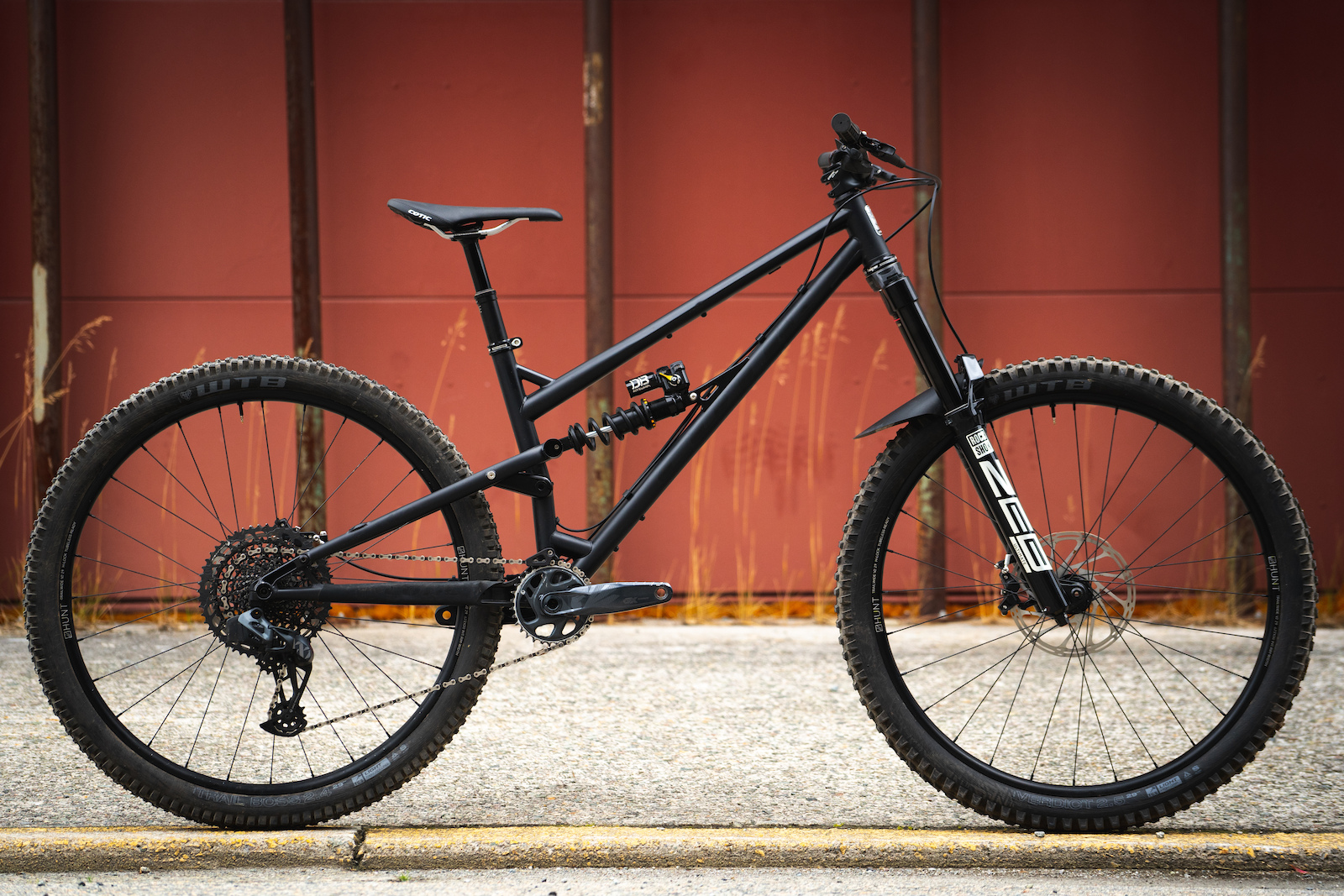

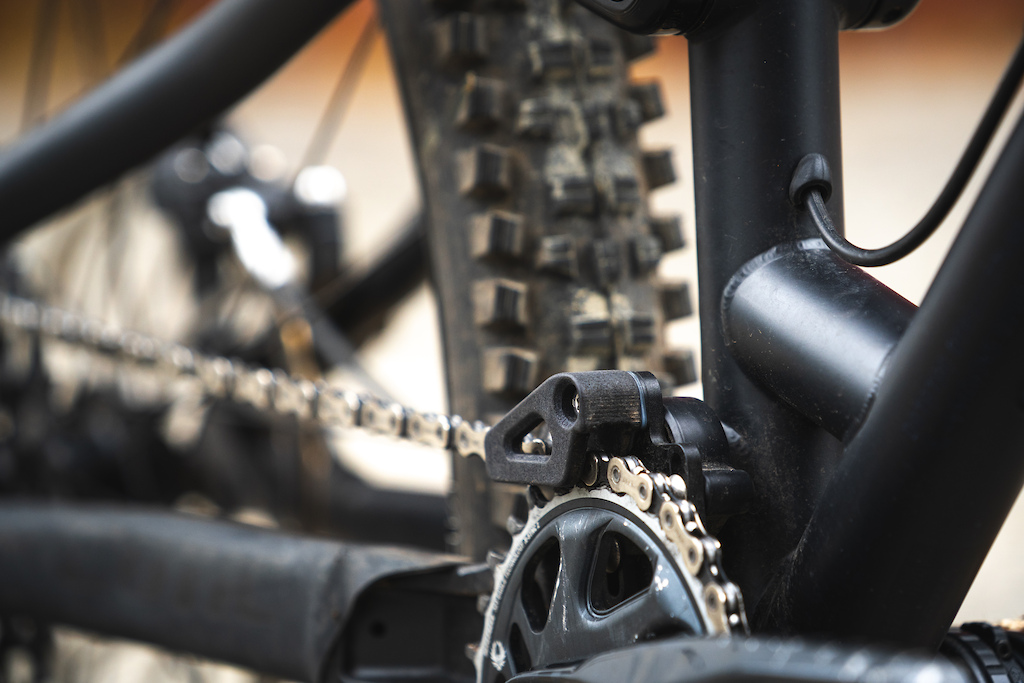
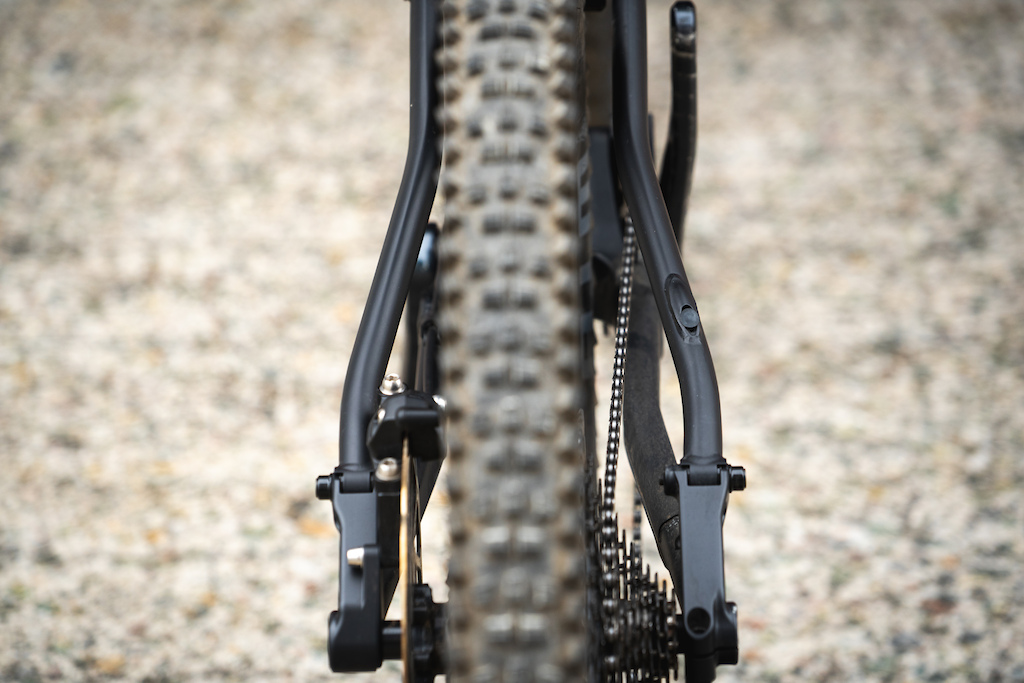
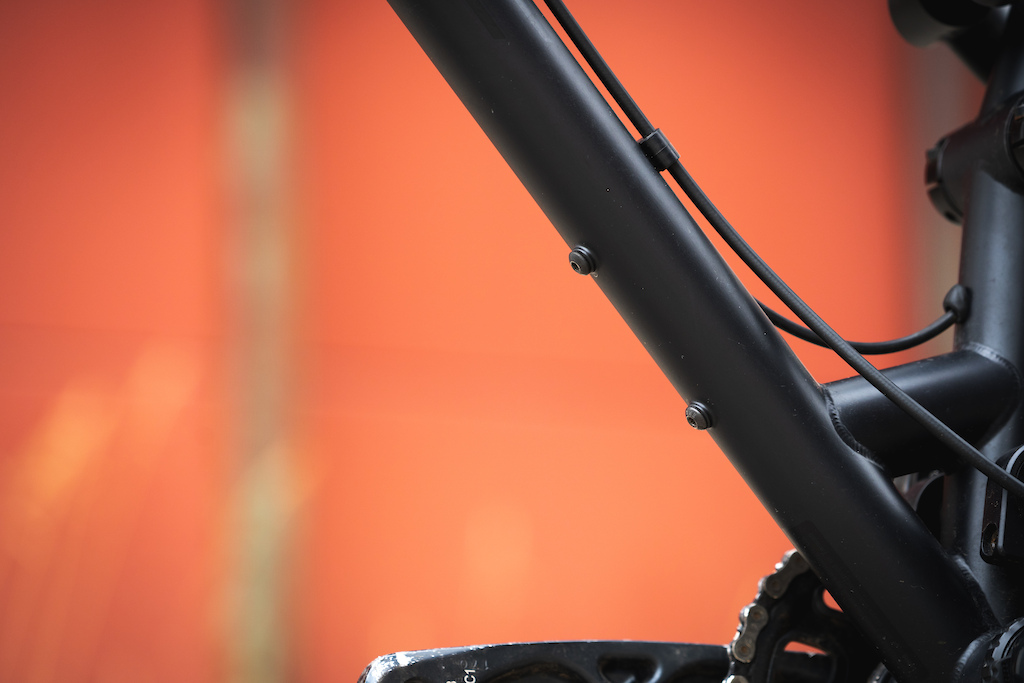
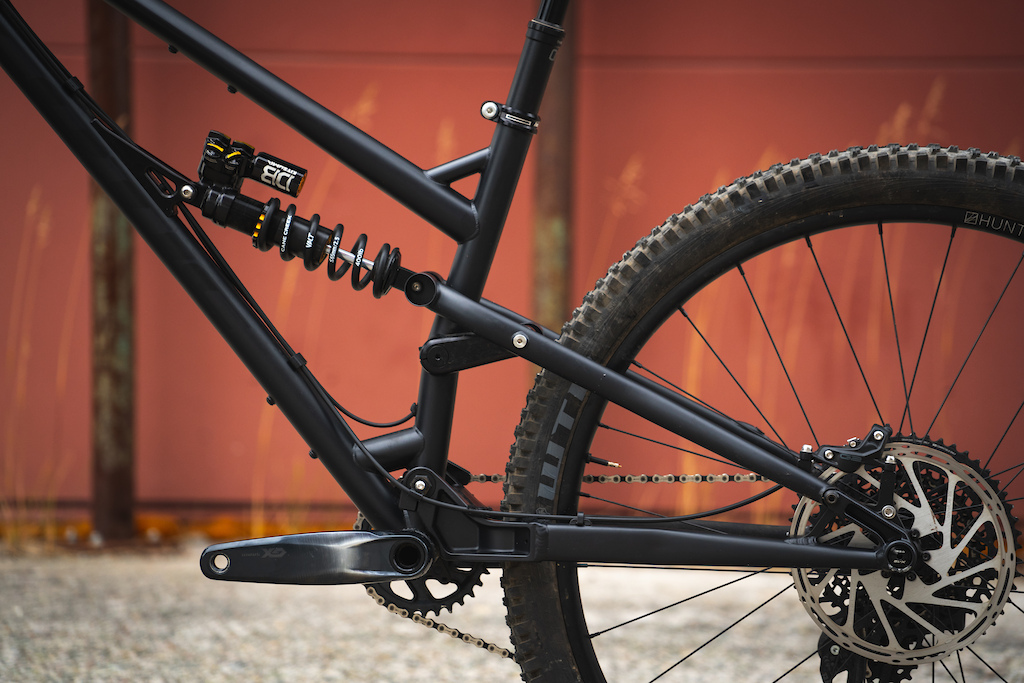
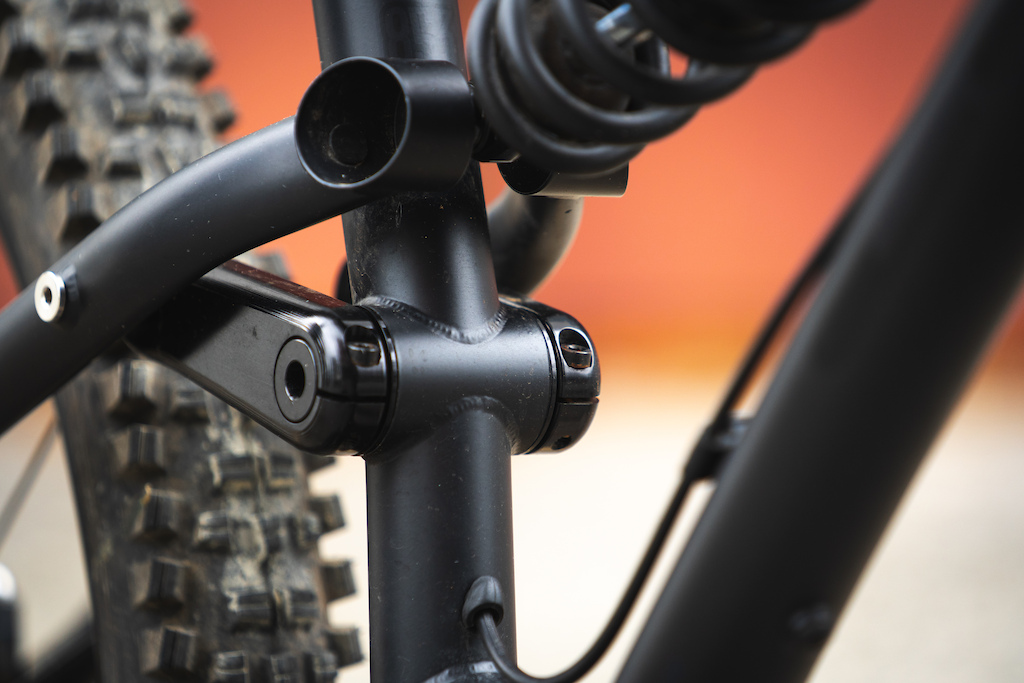


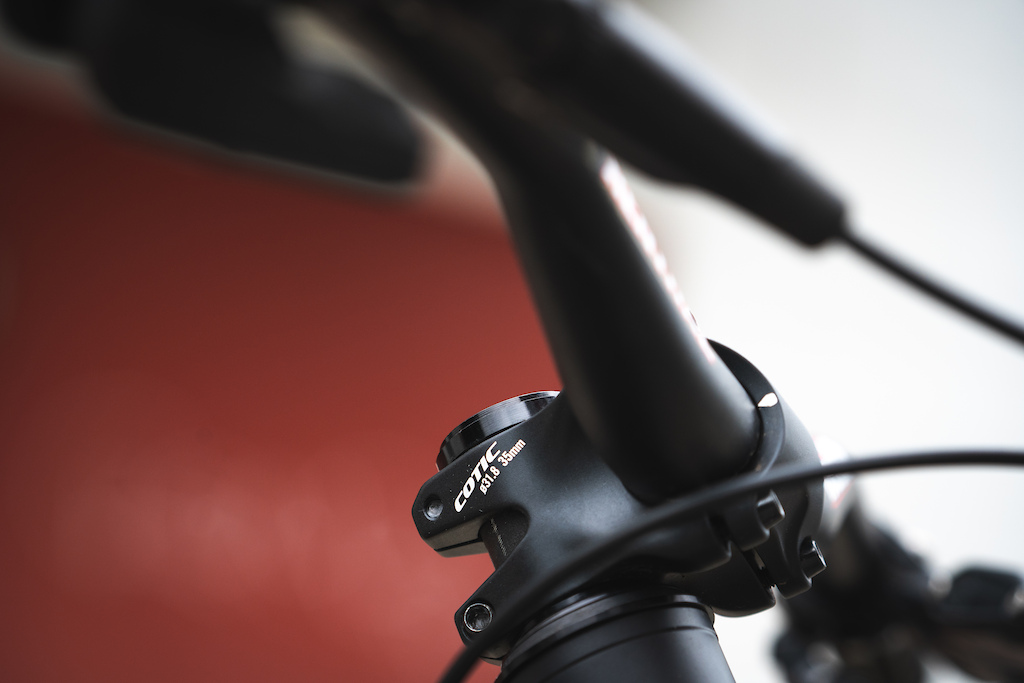

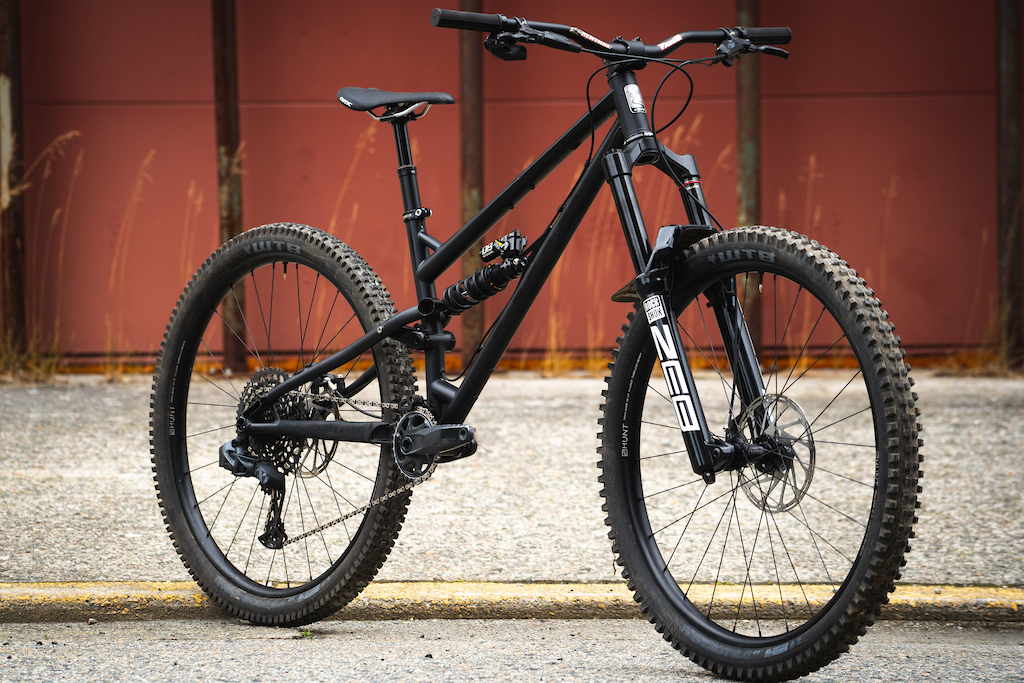


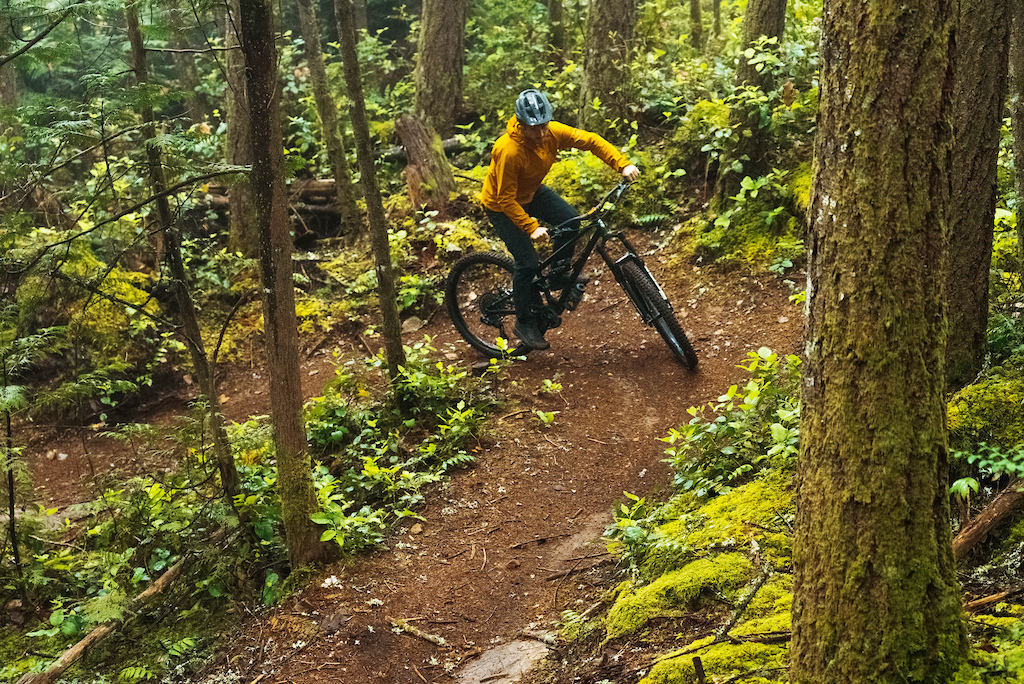


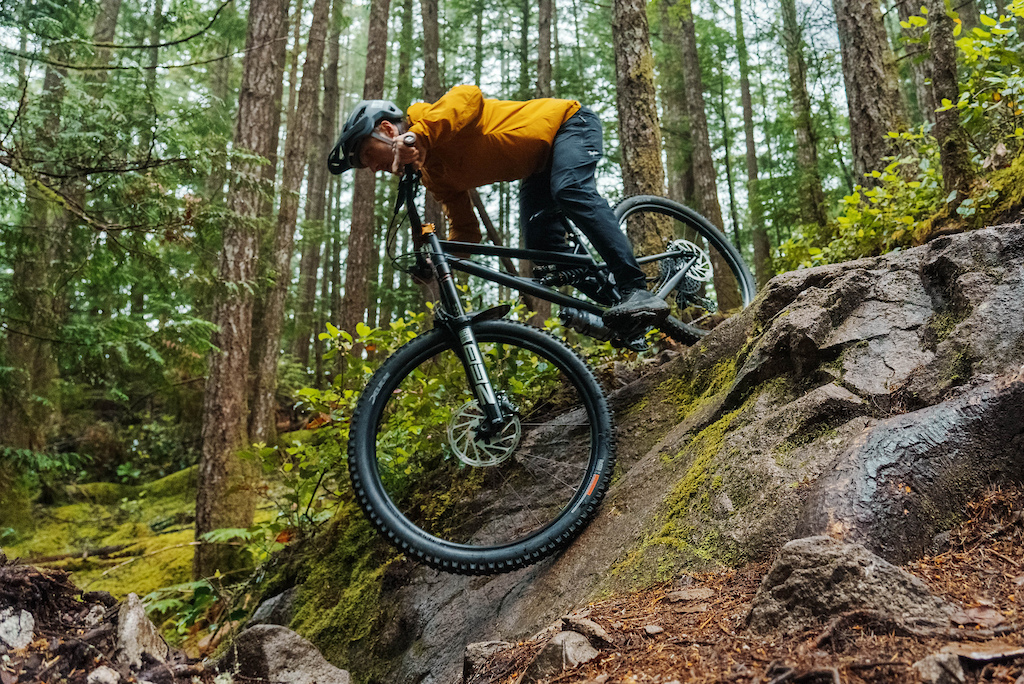

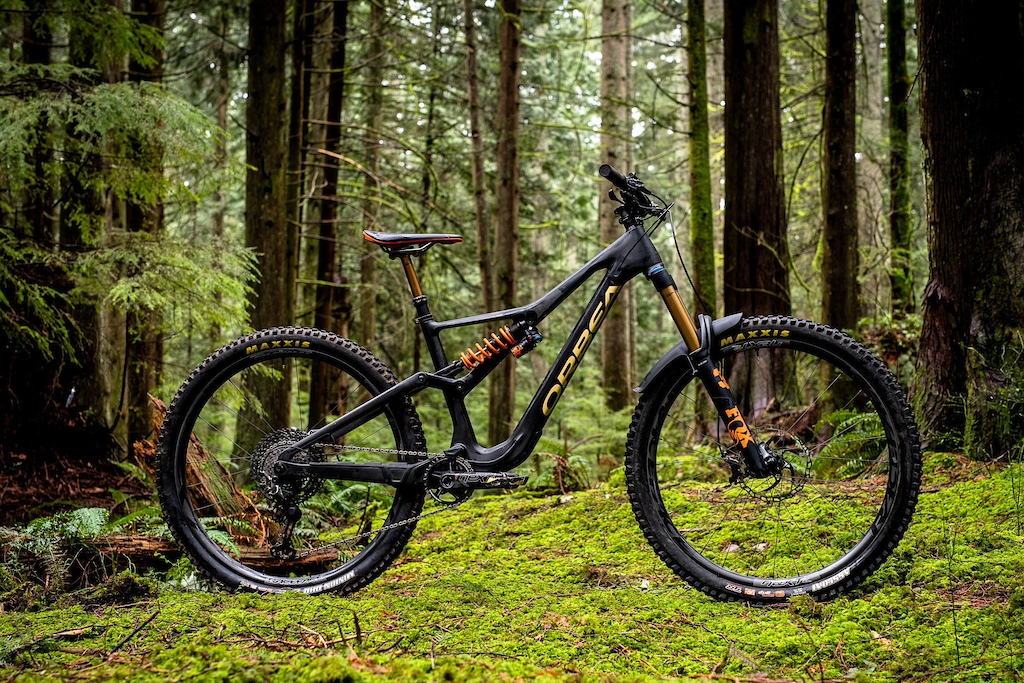
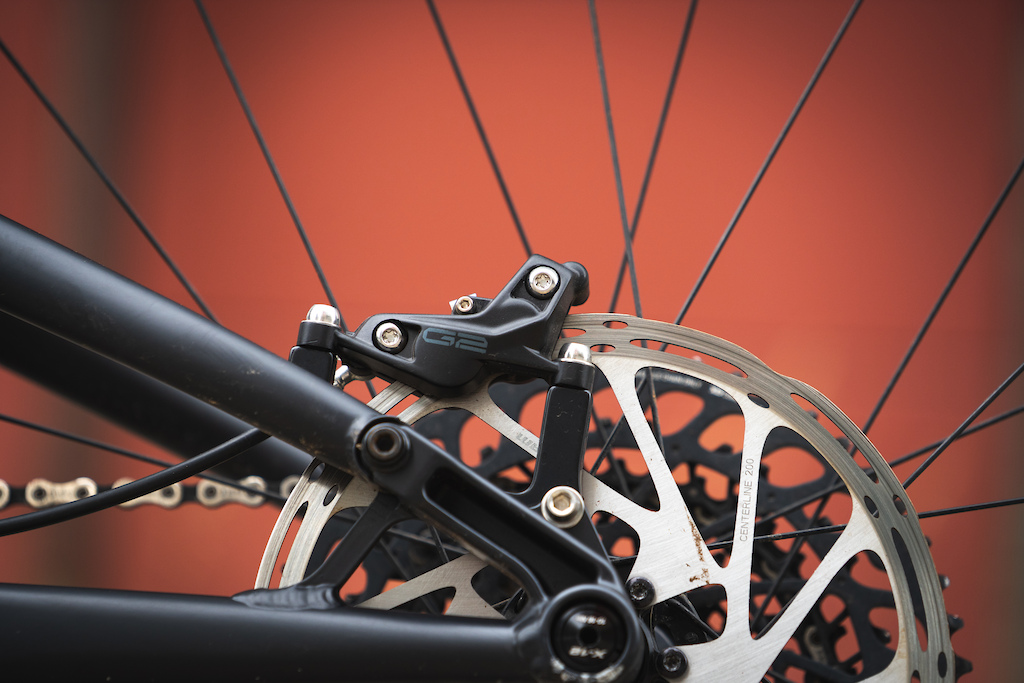
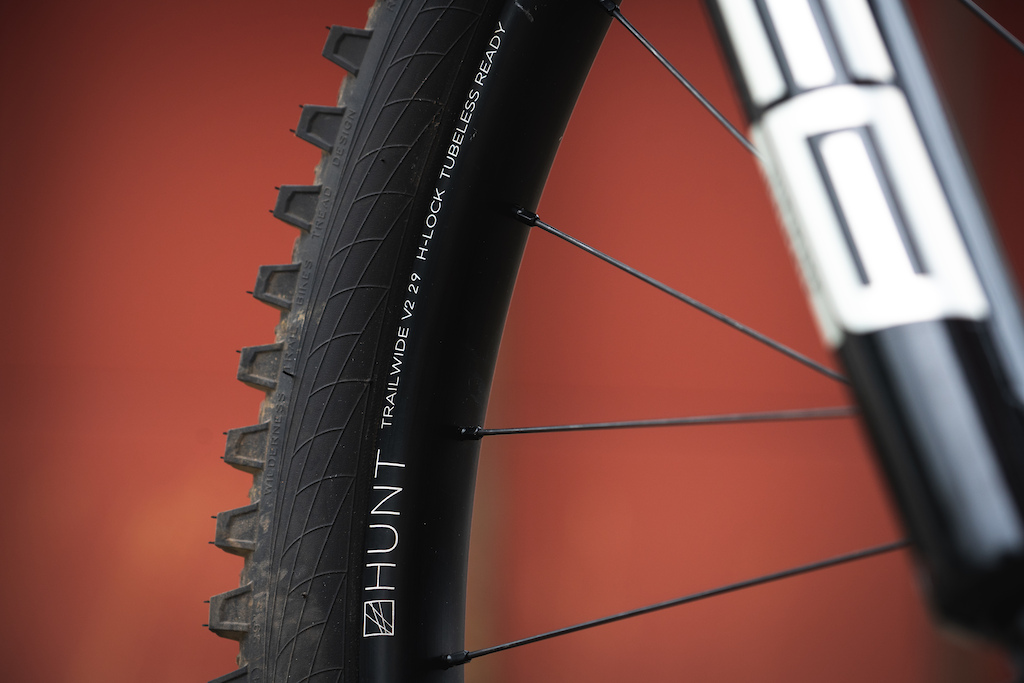


For some?? Who doesn't like a good sip of muddy grainy water while riding
If you love getting loose and steezy there's no better bike to do it on than a COTIC. I've ridden Revel's, Trek's, and Specialized trail/enduro rigs but always come back. 853-steel is surprisingly light and dumb strong, leading to lots of carefree crashes in the woods(if you're into that). The suspension linkage, in my case, also lends itself to encouraging as much "off the brakes" time as possible. I find that the rear wheel jacks up a bit more than some bikes under braking, but when off the brakes you can experience a "bottomless" travel sensation and controlled grip no matter the kind of terrain. Anyways, I'm super biased. I'm sure there are bikes that ride better and faster without compromise, I just happen to like my Cotic.
I can relate to Cotic bikes really letting you get off the back and digging your heels in, and surviving gnarly steep terrain without too many death grip moments.. Nice review!
Or just get a hip pack that takes a bottle like the Camelback flowbelt. *shrugs*
ridegg.com/blogs/dispatch/dampening-not-damping
I love having a bottle in the triangle for shorter rides, but don’t love the horrific damage that down tube belly gets on bigger 2-4 foot ledge-up moves.
Last couple of bikes have I’ve owned accommodated a bottle, so I use one. I’d still buy this and always grab the ass bag if I had to. And beat up my bike less on the ups.
It’s a compromise either way.
@redrook Right now, there is almost no competition in the MTB world. People buy what bikes they can get.
And it's not like frames need to be this heavy. Scott, Specialized, Giant, Liteville and Last show that strong frames don't need to be heavy. It's just that most companies don't bother. They don't need to, because customers don't care enough.
The reasons why everyone doesn't have a superlight frame are pretty clear, since companies have to balance what's possible with what's economical for people to buy. Sure, they could all be incredibly light and strong, but they'd also be incredibly expensive to produce and therefore buy.
Also I'm not sure why all the fuss about single pivot. It's a link-driven single pivot, an incredibly common layout and something you'll find on a ton of bikes right now ie Kona Process, Commencal Meta, Devinci, Trek (technically they're split pivot but same same), and I don't recall anyone ever being concerned about those bikes being too 'simple'.
Single pivot without linkage is stiff? Come on...
Let's compare apples to apples, clearly I meant the meta.
My point remains, lots of high performance single pivot bikes out there.
VPP is not 'basically a single pivot' in any way.
Now I have an S.Enduro and it is a really easy bike to setup with more range in the settings than any off my past bikes.
Have the chance to ride back my last bike for a few moments weeks ago and I would never would go back or miss that suspension kinematics hehehe. But I love the way steel frames looks,big names could do a steel bike again with more involved suspension designs.
No it absolutely does not. VPP is, as the name alludes to, a virtual pivot. The two counter-rotating links mean that the instant center moves as the suspension cycles and is very much the opposite of a single pivot. Do some reading on suspension designs.
Steel frame and floating pivot designs are not mutually exclusive - ie there are floating pivot steel bikes, much the same as there are aluminum/carbon single pivot link driven bikes. My point was I feel like the "steel bike single pivot" thing was driven home for shock value more than anything else.
Shock is key in a single pivot bike,totally agree. In other designs a bad shock or a not so good tune could be decent,but not so in a single pivot bike.
Love to see more carbon/steel frames,narrow front triangle looks amazing to me. I remember photos of an Evil bike rear end on a custom steel frame from not so long ago,what a lovely bike!
Not a team as such but Iago Garay does reasonably well as well as a handful of other riders. Obviously SC Syndicate is legendarily successful
www.santacruzbicycles.com/files/vpp_axlepath_img2.jpg
More material does not mean its stiffer. It depends more where this material is.
The fact that the instant center moves as it cycles is the exact thing that separates VPP from a single pivot. If you don’t understand that then I don’t know what else to say but trust me when I say that you ARE wrong.
@notthatfast: yes I’m well aware that the pivot point can migrate as the suspension moves through its travel if that’s how the twin links are configured again you haven’t answered my question.
frames no matter the material flex way beyond the lower class bearing can allow, in fact frame or swing arm flex can be measured in mm even cm's when under load.
now go sell your woo to someone dumber.
The difference between single pivots (regardless of linkages to drive the shock) and all the other designs is that the pivot point does not move.
All four (or more) bar designs have a virtual pivot point that moves through the travel - it doesn’t matter if they’re long (Horst etc) or short (VPP, DW, etc) link designs.
Split pivot etc are halfway between the two, like the former under pedalling but the latter under braking.
By your definition every possible combination of bars, pivots, sliders, belts, springs, and rollers is "basically a single pivot". The statement is so broad as to be meaningless.
All you've demonstrated is that you don't know what you're talking about.
meanwhile arrogant? that's ad hominem and what people who don't have a legit argument resort to. also, people talking out of their ass don't get to be arrogant.
and one big bearing will sure af have less play and flex than 2 bearings.
with a single pivot there's only one pivot and no links between the frame and the bearing. one piece stuff is stiffer than 2 piece stuff because there are less non rigid parts in it.
what's stiffer, a telescoping pole or a one piece pole?
What od stiffer? A front triangle built of down tube and top tube, or just single tube joining head tube with seat tube?
and single broad stay can be plenty stiff.
that's called crazymaking and is what narcissists, sociopaths and gasligters do. get offline and see a shrink, troll.
SC is a single pivot because ypu said so?! Ffs remind them how wrong they are with your thesis on suspension engineering
Just stop dude.
@notthatfast: again absolutely nothing to contribute, don’t post until you have something to say.
Here’s a better diagram to help you under how a vvp system works and rotwild has a very good description on their webpage. Well worth a read.
i.ytimg.com/vi/wK9xY7Rfy5k/maxresdefault.jpg
There's no such a think as a virtual single pivot, if there are more links than one holding the swing arm it's multilink. No virtual, no imaginary.
And I'm still waiting for that thesis
Every dual short link design is a four bar design. It’s interesting to note that you haven’t separated long link four bar designs into co- and counter-rotating types, as hanging upper link counter-rotating designs are more similar to linkage driven single pivots than they are to co-rotating four bar designs, whilst dual short link designs like DW and KS link sit more in the middle.
If you want to understand this then you need either draw it out and read and understand the theory behind linkage modelling or spend hours playing with the software until it makes sense.
Most bike journalists don’t get it. Most marketing departments don’t get it. Most MTBers without relevant education don’t get it. But some will argue about it because they know too little to understand how little they know.
Not sure what @thenotoriousmic means by the term, he or she certainly does not appear to know what they are on about. Makes for good entertainment tho.
I don't think we can keep lumping certain bikes or styles in with certain materials only. All the materials are awesome to use and some have better applications in particular areas of the bike. We have to be mindful we aren't trying to produce space shuttles or F1 cars. We just want to produce great riding bikes. That can be achieved in a few different ways and can be different for everybody. None of the choices devalue what is a choice for anyone else really It's just different.
It's clearly going to be a talking point on a steel framed bike, so why not be specific about it and save us all the guess-work in the comments?
It's not even hard to find out on a bike like this that's available as a frame-only option - I'm sure Cotic can tell you exactly what it weighs if you ask them!
*I'd love see how the longer numbers (reach, chainstay length, wheelbase) on this would fair against my current ride which shares the same HA/SA and fr/rr travel
**That is what I run 98% of the time and that's plenty for a sub 2 hour ride even in the sweltering southern US heat. Saw a guy on a Cotic at my local trail recently. They are rarity here as I'd never seen one irl.
I replied to a post above, but I checked the CAD and you could flip the Kitsuma on the C2 and clear everything, making room for a reasonable sized bottle.
"Thanks Bro, its a C3. I was gunna go for the C4 but CY talked me out of it."
"oh, ok."
I do find my calves rub on the droplink under heavy cornering - a rubber cover for these would be incredible
I see why single pivot,but whit full alloy rear end they could made more intricate suspension designs.
Best thing ridding steel is the sound little rocks made in the downtube. I have now a dirt jump bike only made from steel,but I was looking at the Cotic Flaremax.
I hope more brands made bikes like you,good steel front end and alloy or carbon rear end,makes sense.
Frame weight isn't all that important on a bike likely to have Cushcores and double casing tires installed on both wheels. With a reasonable (for bike stuff) price and what sounds like excellent support/setup advice this would be a good choice for a privateer racer looking for a burly race bike.
Also would be cool to see reviews for 29er bikes that incorporate DIY tweaks like mulletizing and seeing how the geo / handling changes.
That's quite a deductive leap there. There are so many other variables: Same average leverage rate? Same starting or ending leverage rates? Same sag recommendation? Same shock with the same settings? Same spring? Same fork (yes, how the fork acts can have a quite noticeable impact on how the rear acts) with the same settings? Same frame geo? Same ride position?
So many things can affect bottoming out, just citing a couple tenths difference in the respective change of leverage rates tells so little of the story it's really not worth mentioning.
The stack was slightly high feeing as well
5’10 & 33 inseam. Tried a large v2 and medium v3 with a few different seatposts Great cornering memories
Cheers Cy
I came close to ordering a Cotic Jeht at the end of last year just because I can sometimes be a sucker for alternative offerings. However, being relatively new to mountain biking I decided to play it safe, ending up with a carbon Ripmo that I bought through a shop. Cost was roughly the same. I have to say, though, that after seven months the Ripmo has failed to endear itself to me. Buyers remorse has me wondering if I should have lived a little more dangerously and went with the Cotic!
I don't know, maybe for size C1. But I think that a 448mm chainstay is great for a bike with 462mm reach
I'm thinking it's not gonna pedal that well (surely anti-squat has to suffer on this CS length), but will be more composed on the descents. There's not many comparable bikes out there, anyone with more experience to share on this?
Thanks for the replies, great to hear from people in the know!
I suspect the bike weight has been kept down with the questionable choice of G2 brakes and "trail" wheels, as well as high-end drivetrain bits.
Personally I'd absolutely want the "enduro" wheels and some meatier brakes on this bike (which I'm sure is awesome to ride based on my experiences of other Cotic FS models).
Also, I'm surprised @mattbeer holed the front Verdict, that's not really a "light" tyre at all and mine's been superb (with an insert). The "tough" WTB carcasses are hard graft on the front.
What exactly are those preconceived notion that should be thrown out? They don't corner or descend? Didn't realize anyone was saying that. You also directly attributed the head angle and the shock as contributing to the cornering and descending prowess, but those have nothing to do with the single-pivot or steel nature of the bike.
I don't think anyone is saying one can't "get away with" a given ride style on single-pivots or steel, just that they have a different feeling. It's impossible to make a single-pivot feel the way some multi-link systems do, and even if the SPs can "get away with" the same stuff, it's a different feeling. And while frame flex is a kinda personal thing so some will like/want it and some won't, steel frames just can't really keep up with stiffness and maintain reasonable against other materials, where-as some of those other materials can be made almost as compliant and maintain a competitive, if not lower, weight.
So, my preconceived notions are that steel is relatively flexy, or heavy, or both (that's not necessarily bad, but it is true), and single-pivots cannot provide the same feel as multi-links (again not bad, but true), and despite what this bike can "get away with", it's not going to change those notions.
Why would someone want to add spacers to the shock to limit the travel? Loads of companies are selling this as a feature these days, however as has been asked by many different people in many different comment threads, why would you want to?
You are talking about the forks. My question was about the shock. Why would anyone ever want to limit the shock stroke? The way the bike rides will be completely unaffected, other than it will bottom out unnecessarily.
It seems like you are trying very hard to avoid actually answering the question. What is the actual advantage of putting a spacer in your shock to make the rear end bottom out sooner than is necessary? How will the bike ride better, because an extra bit of plastic has been added to the rear shock, and how is this a feature?
If you want the firmer ride feel, just run the longer stroke shock a bit firmer, there is no need to limit the travel. And doing so offers absolutely no advantages whatsoever. It just makes the bike objectively worse. The marketing spiel should actually read "the bike is quite good, and if you want you can make it less good! Thats a great feature isnt it?"
I agree with @cotic-bikes, shortening your travel doesn't make the bike "less good". It makes it feel different - how good that is depends on the rider and the terrain.
But to be clear where my stance is, (and I believe this to be an objective truth) if you take a frame design that is capable of producing X amount of travel, and you limit its ability to do that by adding travel reducers to the shock, you have made your bike less good. There is absolutely no advantage to be gained through bottoming out earlier than necessary. It is essentially the same idea as buying a car with a 90L fuel tank, but only ever filling the tank half way. You are just making your life less good, for no advantage.
"Most" travel spacer are pretty small compared to "most" volume spacer. You have an example of one that noticeable reduces volume and travel together? On some (many? most?) travel reduceable shocks the shorter lengths actually allow more volume spacers because the ending pressure just doesn't get as high, so there is just less spring rate at bottom out for a given pressure. Yes, pressure will probably go up to get the lesser sag on a shorter overall travel, but that's just a few psi to get 1 or 2 mm less sag, not gonna make a huge difference at bottom out unless volume spacers are added as well.
And how about on a coil?
I think you need to get a life.
Would you care to provide some actual input, or are you just one of those people that likes to say irrelevant stuff just so they can feel like they are taking part?
Yes, it is personal preference and you can {and will) argue all you want but that doesn't make it wrong.
Fitting the wrong shock to your bike is personal preference yes. You can put your tyres on backwards and your brake levers upside down too. It's all personal preference, but that doesn't make it right.
Of course you can, but it's a terrible idea.
If the 65mm stroke shock is actually the same shock as the 60mm, just with a travel limiter, how exactly is the spring changing?
E=Mtb²
I thought the fascination with head tube angle as a singular number of import was on the way out. Since what you're actually a fan of is a certain (long) front center, that's what's making the rowdy steeps fun. FC is connected to HA, and reach, and wheelbase; but none of those alone, including HA, can really tell you much. Could have a super slack HA but a tiny reach, FC, and WB, and it still wouldn't be what you want for rowdy steeps. Which bring us to:
"If you’re interested in running a 27.5” rear wheel ... by installing a 1-degree altering headset, the resulting geometry reduces the reach and seat tube angle slightly, while retaining the head tube angle."
Who cares if the head angles match to the nearest 10th of a degree? That option also takes 11mm out of the front center and the wheelbase, and that's going to make a bigger difference than just changing the HA by a degree.
Not even to mention that hands relative to the front wheel can be affected by more than just HA: stem length and height, bar sweep and rise and roll, and fork offset. If FC is the driving factor for managing rowdy steeps, then CG to axle can remain the same for a range of head angles, and hands to axle can also be adjusted to suit the same range of head angles.
HA is no more or less important than anything else, and does not really tell much without other variables: front center or reach at the very least.
There are more than a few bikes (Guerilla Gravity, SC V10, for some examples) out there with adjustable headsets that can change both reach and front center, but nothing else, by 5 to 10mm in each direction. It's not ridiculous to think that someone sensitive to the bike (and this does not mean they have to be crazy fast or uber skilled, just observant) would notice 11mm of front center alone.
I’ve experimented with fork length, angle headsets and adjustable geometry on past bikes - I did four different combinations on my last hardtail and about a dozen on my full-sus. Fit aspects (reach and stack) are very obvious. Head angle is very obvious. The other stuff is more of a muddle, harder to separate out.
All valid points, but just not as fun (in my opinion!)
Yea, also I don’t have any of the issues you mention with a 435-440mm chainstay...
I find the industry swings from one extreme to the other. 5 years ago everyone was making CSs as short as possible - Canfield even managed to get down to 415mm on a 29er lol.
Now we are heading back towards the 450-460mm is cool again.
But really, somewhere in the middle 435-440mm on a 29er with 480-490mm reach is where it is perfect for *me*
Yea, I’m rockin’ a 485mm reach 430mm chainstay transition scout and its the most fun bike I’ve ever ridden. Just sayin’
I get it, a single pivot is simple, but it's just not a great design for anything but flow, all day chunk will kick your arse on a single pivot.
Paul Aston have some interesting words about an Orange downhill bike.